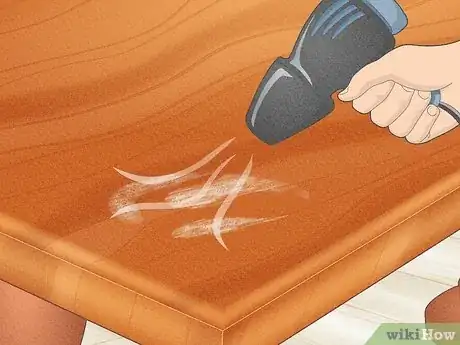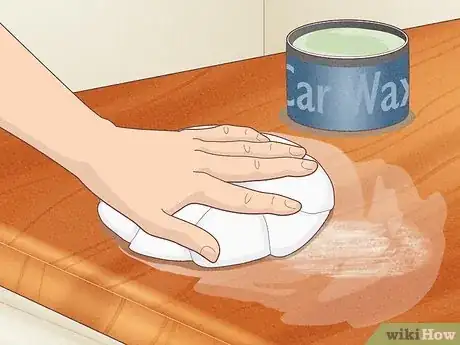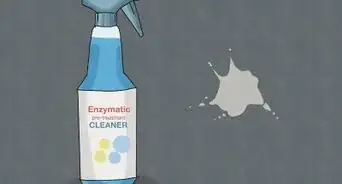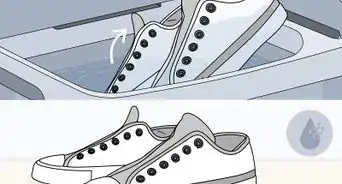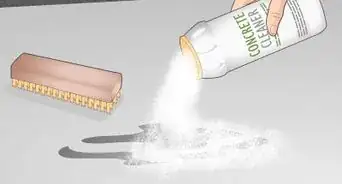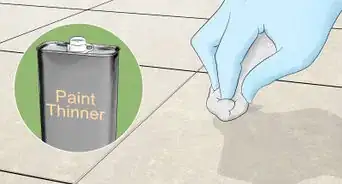This article was co-authored by wikiHow staff writer, Dan Hickey. Dan Hickey is a Writer and Humorist based in Chicago, Illinois. He has published pieces on a variety of online satire sites and has been a member of the wikiHow team since 2022. A former teaching artist at a community music school, Dan enjoys helping people learn new skills they never thought they could master. He graduated with a BM in Clarinet Performance from DePauw University in 2015 and an MM from DePaul University in 2017.
There are 7 references cited in this article, which can be found at the bottom of the page.
This article has been viewed 10,280 times.
Learn more...
You’re cleaning up after a dinner party and notice some fresh, white heat stains on your dining room table—what can you do to remove them? Heat stains form when hot objects, like a casserole dish, cause the wood’s pores to expand and trap moisture and other debris. Thankfully, there are a variety of remedies to treat heat stains that don’t involve hauling your table to a stain removal expert. That’s why we’ve put together a handy list of ways to remove heat stains from wood using common household materials. If you’re ready to make your wood furniture look good as new, keep reading!
Things You Should Know
- Use heat from a hair dryer or an iron to reopen the wood’s pores and evaporate the moisture that caused the stain.
- Apply oily products like mayonnaise, petroleum jelly, or olive oil with a cloth or fine-grade steel wool to penetrate the wood and lift the stain.
- Sand away the stain and refinish the wood as a last resort. When in doubt, take your heat stained wood to a professional to avoid accidental damage.
Steps
Warnings
- Check for wood damage every minute or 2 while you treat the stain, regardless of which method you choose. Too much heat or abrasion can damage your wood even more than the original heat stain.[19]⧼thumbs_response⧽
References
- ↑ https://cutthewood.com/diy/how-to-remove-heat-marks-from-wood/
- ↑ https://www.hometalk.com/diy/repair/furniture/quickly-remove-heat-stains-from-wood-29773923
- ↑ https://cutthewood.com/diy/how-to-remove-heat-marks-from-wood/
- ↑ https://cutthewood.com/diy/how-to-remove-heat-marks-from-wood/
- ↑ https://www.manmadediy.com/how-to-remove-white-spots-from-wood-furniture/?chrome=1&A1c=1
- ↑ https://cutthewood.com/diy/how-to-remove-heat-marks-from-wood/
- ↑ https://www.manmadediy.com/how-to-remove-white-spots-from-wood-furniture/?chrome=1&A1c=1
- ↑ https://www.manmadediy.com/how-to-remove-white-spots-from-wood-furniture/?chrome=1&A1c=1
- ↑ https://woodworkingquestions.com/how-to-remove-heat-stains-from-wood/
- ↑ https://www.manmadediy.com/how-to-remove-white-spots-from-wood-furniture/?chrome=1&A1c=1
- ↑ https://www.manmadediy.com/how-to-remove-white-spots-from-wood-furniture/?chrome=1&A1c=1
- ↑ https://kitcheninfinity.com/how-do-you-remove-heat-stains-from-wood-tables/?utm_source=rss&utm_medium=rss&utm_campaign=how-do-you-remove-heat-stains-from-wood-tables
- ↑ https://woodworkingquestions.com/how-to-remove-heat-stains-from-wood/
- ↑ https://kitcheninfinity.com/how-do-you-remove-heat-stains-from-wood-tables/?utm_source=rss&utm_medium=rss&utm_campaign=how-do-you-remove-heat-stains-from-wood-tables
- ↑ https://theplywood.com/remove-heat-stains/
- ↑ https://theplywood.com/remove-heat-stains/
- ↑ https://www.cnet.com/home/smart-home/how-to-remove-water-stains-water-marks-from-wood-furniture/
- ↑ https://kitcheninfinity.com/how-do-you-remove-heat-stains-from-wood-tables/?utm_source=rss&utm_medium=rss&utm_campaign=how-do-you-remove-heat-stains-from-wood-tables
- ↑ https://cutthewood.com/diy/how-to-remove-heat-marks-from-wood/
